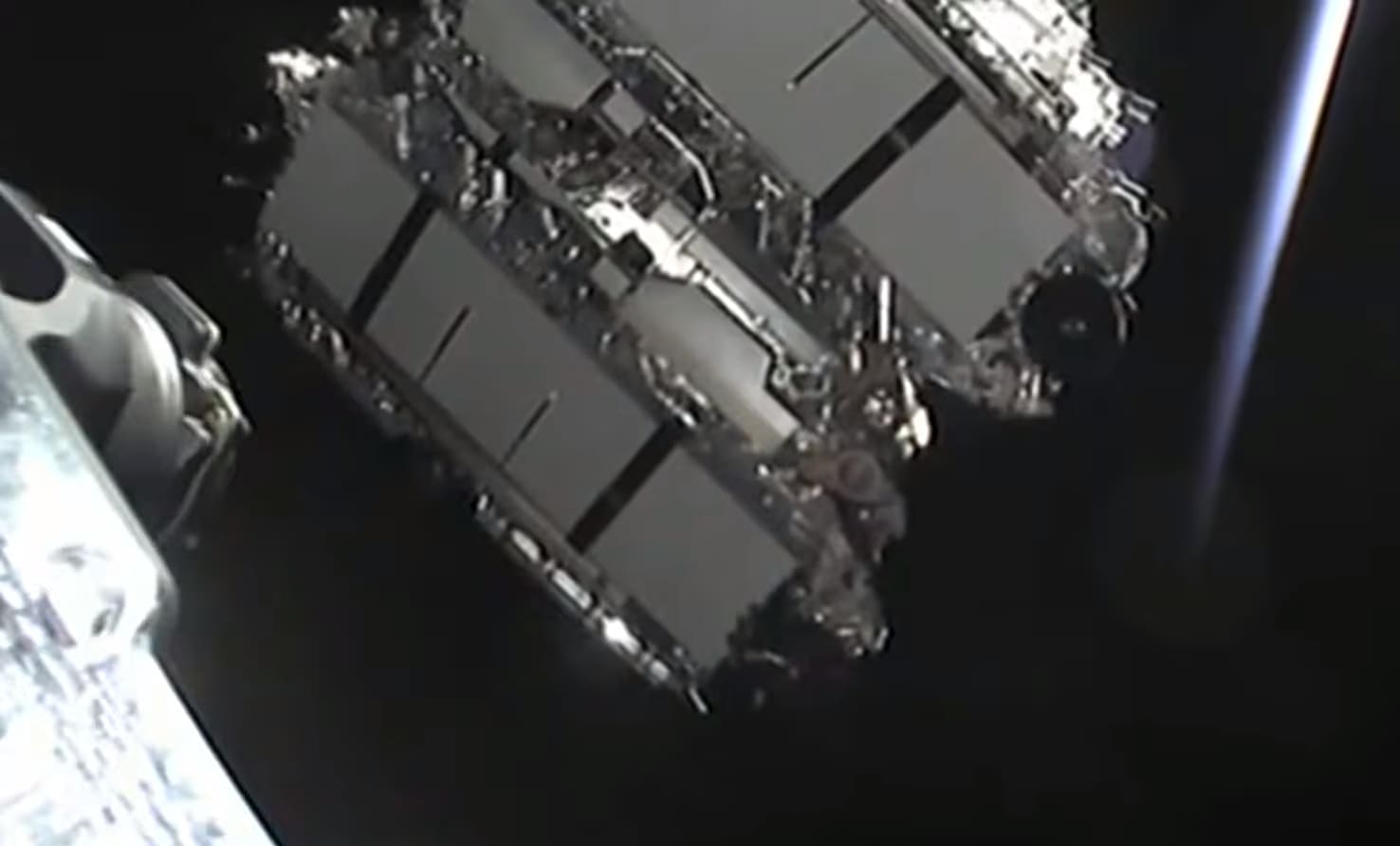Elon Musk’s SpaceX revealed new details about plans for the next-generation of satellites in its Starlink internet system in federal filings on Wednesday, including that the company intends to use its massive Starship rocket as the primary vehicle to deliver the spacecraft to orbit.
SpaceX filed an amendment with the Federal Communications Commission that included descriptions of its plan, known as the Starlink “Gen2 System.”
“This Gen2 System was designed to complement the first-generation constellation SpaceX is currently deploying,” SpaceX wrote in the filing. “While the original constellation provides unprecedented capacity for a satellite system, the demand for more broadband continues to grow unabated and the need for user connectivity has never been more important.”
Starlink is the company’s capital-intensive project to build an interconnected internet network with thousands of satellites, known in the space industry as a constellation, designed to deliver high-speed internet to consumers anywhere on the planet. SpaceX first rolled out the service with a beta program for select consumers for $99 a month, and in the past year has begun looking to test the network for aviation service inflight and expand the service to large moving vehicles, like ships and trucks.
While Starlink service is still in beta, the company recently said that the network has about 90,000 users in 12 countries so far, with over half a million orders or refundable deposits placed by potential customers.
SpaceX has launched 1,740 Starlink satellites to date, with its first generation system beginning launches in November 2019. Gen2 is planned to have nearly 30,000 satellites in total.
Starlink Gen2
SpaceX says the Gen2 Starlink satellites are heavier and “will be somewhat larger and generate more power than originally” designed. That will allow the satellites to “support expanded capabilities” for SpaceX’s network, as well as “accommodate additional payloads in the future” – the latter meaning Starlink satellites may be able to host sensors or antenna for other companies.
The “preferred configuration” for Gen2 would feature 29,988 Starlink satellites in orbit, deployed at nine altitudes, ranging from 340 kilometers to 614 kilometers. Previously SpaceX had proposed Starlink would have 30,000 satellites across eight altitudes, ranging from 328 kilometers to 614 kilometers.
“SpaceX would target multiple inclinations to more evenly spread capacity by latitude, ensuring better, more consistent global coverage,” the filing said.
Additionally, SpaceX’s amended plan would “nearly double the number of satellites deployed in a sun-synchronous orbit,” which would allow the company to provide better “service to polar regions like Alaska.”
The company also noted that “SpaceX has invested in advanced propulsion capabilities for its satellites,” so that the “collision risk with large objects is considered to be zero while the spacecraft are capable of maneuvering.” When a Starlink satellite malfunctions, SpaceX disposes of the satellite by reentering into the Earth’s atmosphere so that it burns up and disintegrates.
SpaceX emphasized that, if a Starlink satellite is out of control, the low altitude of the satellites in orbit mean the spacecraft would be in orbit for “less than four years” before reentering.
Space debris is another threat both to and from Starlink satellites that SpaceX aims to further protect against with Gen2.
“SpaceX is also aware of the possibility that its system could become a source of debris in the unlikely case of a collision with small debris or meteoroids that could either create jetsam or cause loss of control of the spacecraft and prevent post-mission disposal,” the company wrote. “SpaceX has continued to explore ways to make its spacecraft even more resistant to such strikes. Although the design of these protective features is still being finalized, SpaceX has improved redundancy in the power and propulsion systems.”
Leveraging Starship
SpaceX has talked before about the additional capabilities that Starship would bring to deploying its Starlink network, but the filing on Wednesday outlined that it plans to use the massive rocket as the primary delivery system for Gen2.
The company’s leadership has previously touted the increased capability Starship would bring. Its Falcon 9 rocket can launch 60 Starlink satellites at a time, but Starship would be able to “take 400 satellites at a time,” SpaceX president Gwynne Shotwell said in 2019.
Amending Starlink’s altitudes and constellation design would also allow SpaceX to launch the satellites directly into intended orbits with Starship, the company said.
“The revised orbital planes would enable single plane launch campaigns that capitalize on the ability of Starship to deliver satellites at a faster pace by not necessarily requiring a waiting period for orbital precession in a parking orbit. SpaceX could deploy satellites into their operational orbits within a matter of weeks after launch, rather than months,” the company added.
SpaceX also included a deployment plan for Gen2 that continues to utilize its Falcon 9 rockets, in case Starship is not operational by the time the new Starlink system begins launching. The company has completed multiple test flights of Starship prototypes over the past year, and is moving closer to its first orbital flight attempt. SpaceX recently stacked prototype Starship 20 on a Super Heavy rocket booster for the first time. Musk said last weekend that it “should be ready for flight in a few weeks, pending only regulatory approval” to launch.
Starship and Starlink each represent multi-billion dollar projects that are key to SpaceX’s growth, driving much of the company’s $74 billion valuation.
Become a smarter investor with CNBC Pro.
Get stock picks, analyst calls, exclusive interviews and access to CNBC TV.
Sign up to start a free trial today.
